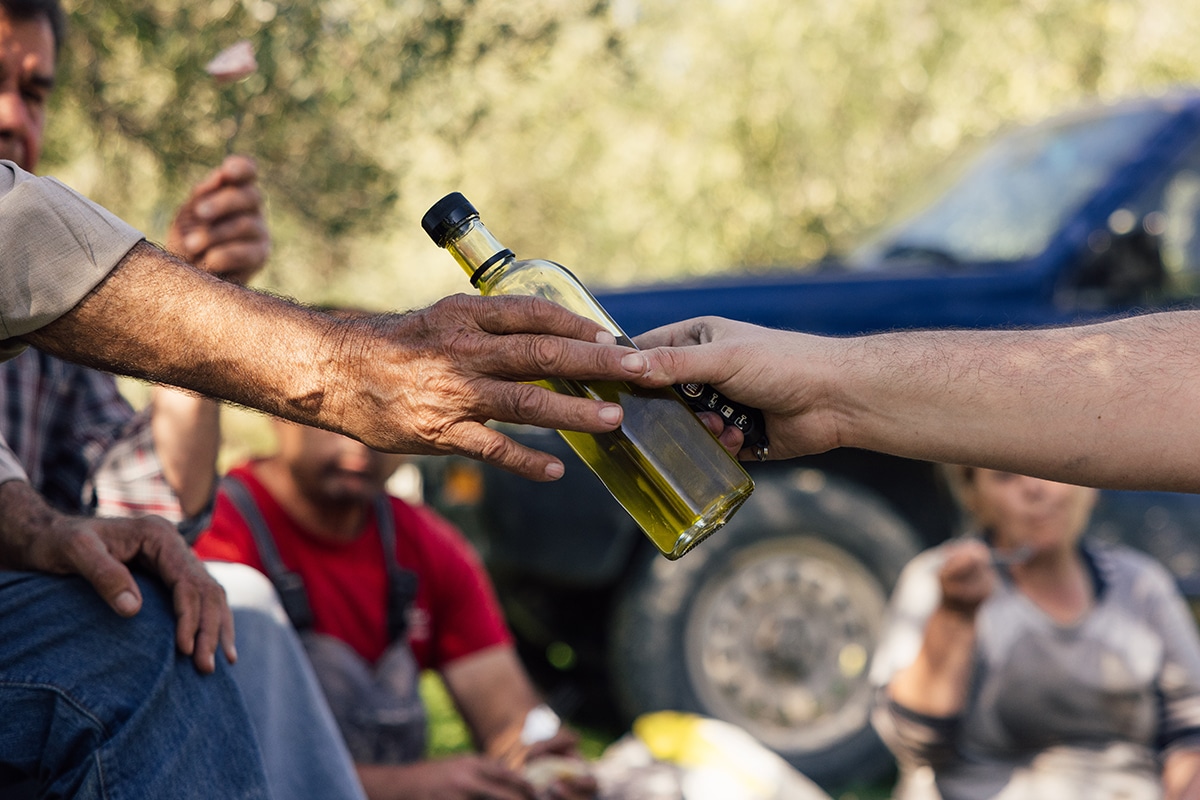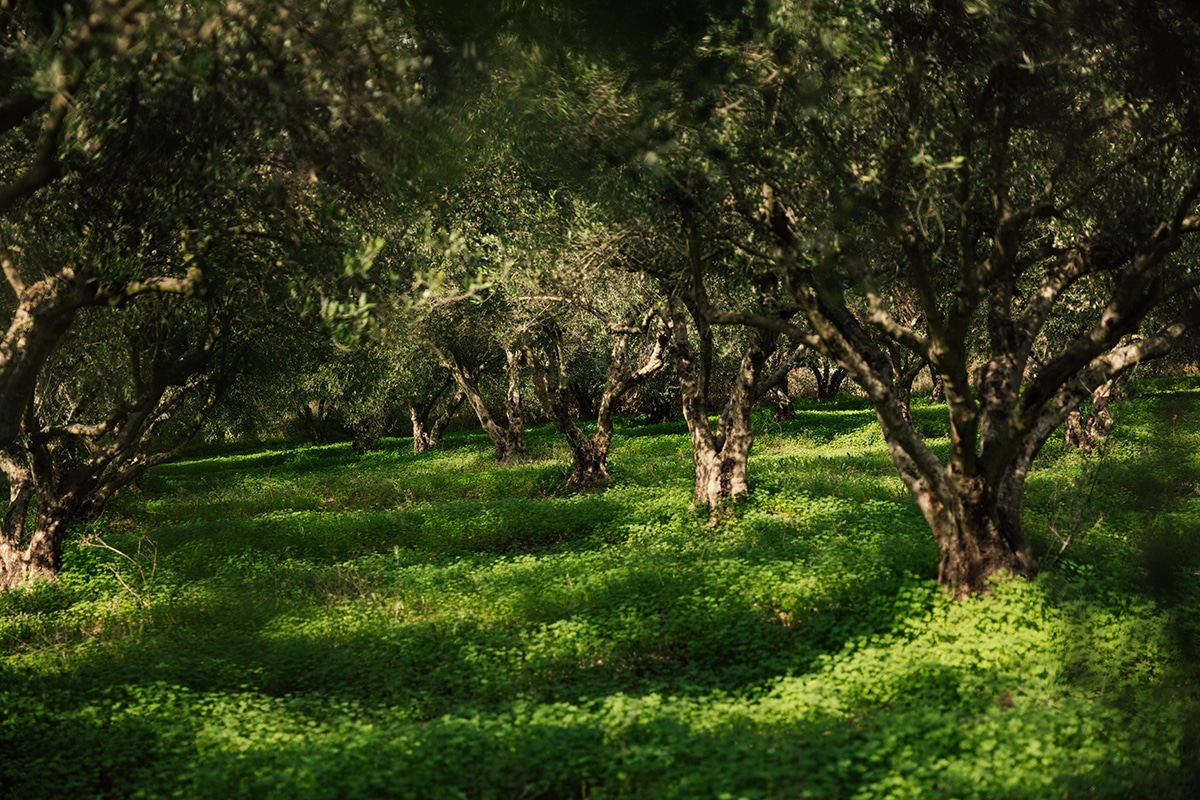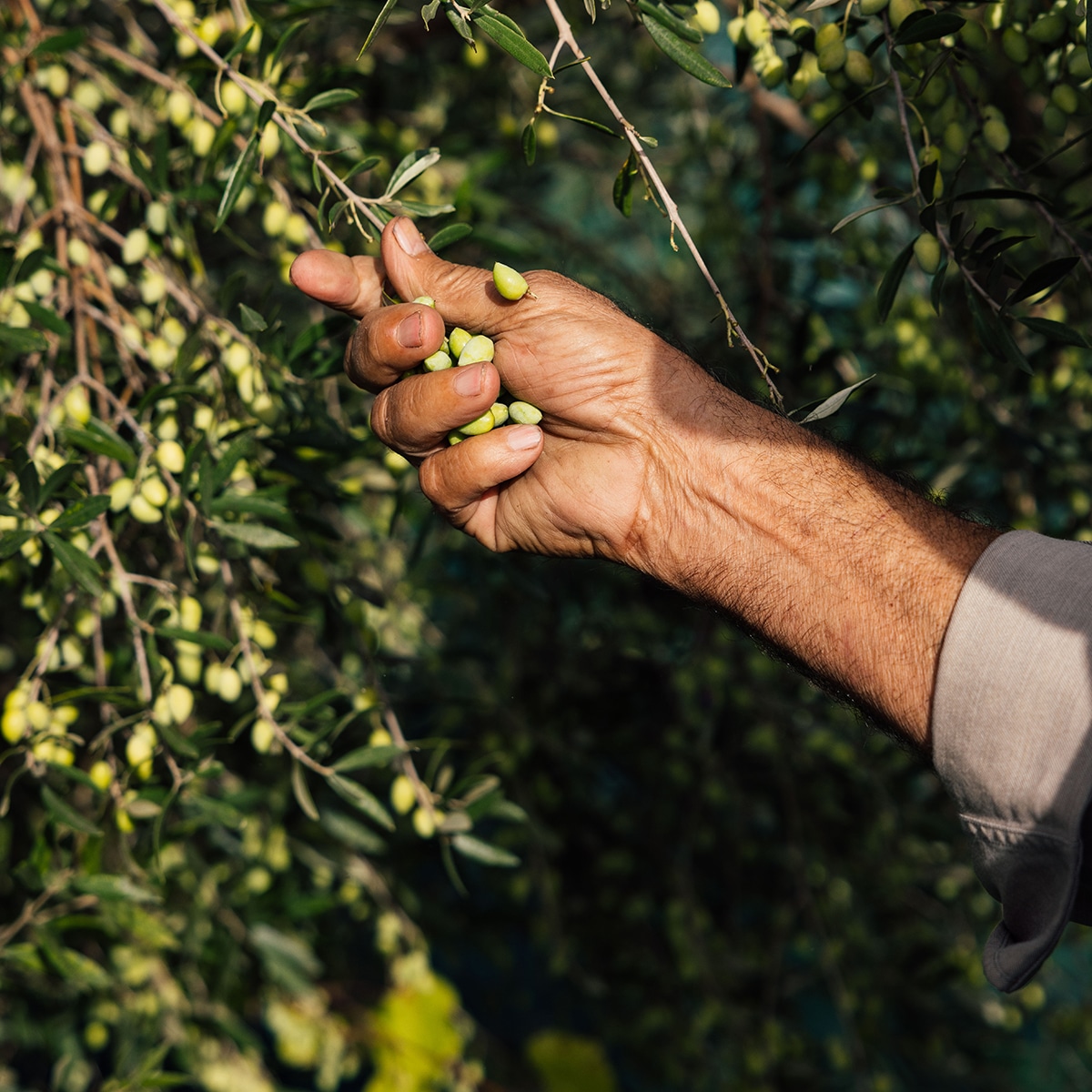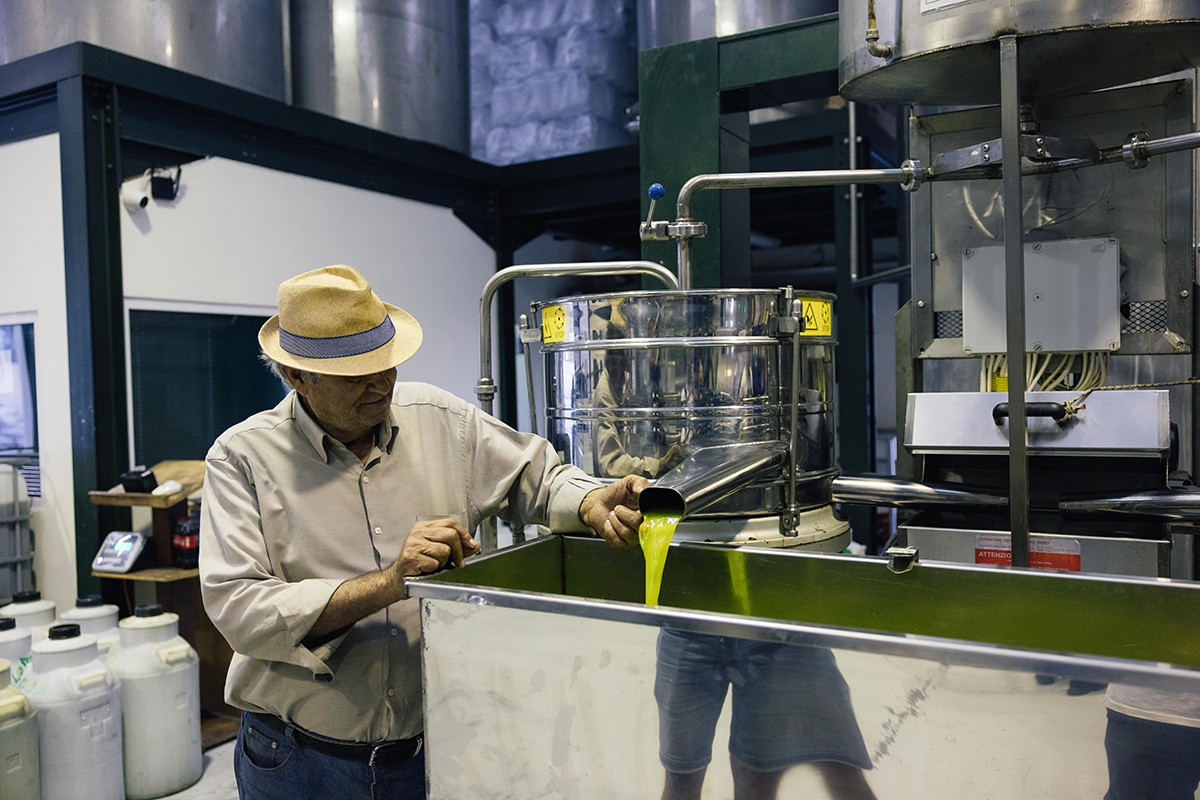So what makes the best olive oil? That seems like an easy question, but it took us years to truly answer it. It goes beyond ‘the best olive oil is organic and extra virgin.’ We speak to founder Floris to finally clarify the question once and for all.
It’s not the acidity
If you’ve done a bit of research, you might think you know the answer. Olive oil is of high quality (read: extra virgin) when the acidity does not exceed 0.8 percent. The best olive oil has an acidity of 0.5. While this is a way to classify different types of olive oil, it is not a solid method to judge olive oil. Floris explains: “The problem with determining the quality of olive oil based on acidity is that it can be easily altered/forged through chemistry. This way, a poorer olive oil can suddenly appear to be of the best quality.” Okay, next!

Organoleptic assessment of the best olive oil
Organi-what? Organoleptic! Floris: “It means determining the quality of olive oil based on taste. You then perform a taste analysis (some experts can taste this, but usually it’s done in a lab). In a highly qualitative olive oil, up to 25 different flavors are present, such as nuts, tomato, and artichoke. This is all related to where the olive tree grows, the type of soil, and so on. There are 3 main parameters: fruitiness, bitterness, and the pungent taste in the throat. The higher these values, the better the quality of the olive oil. Fun fact: when fruitiness scores higher than bitterness and pungency, the olive oil is less likely to show defects.”
Defects in olive oil can manifest in different ways and are recognizable to a trained taster. The olive oil then tastes musty or rancid. You can also see it in the color of the olive oil (other than deep green to golden) or if the olive oil has mold.

What influences the quality of olive oil – molecular structure?
“This concerns the effect on the integrity of the molecular structure during the lifespan of the olives and ultimately the olive oil. And I’ll prepare you in advance; many factors come into play. That’s also why the best olive oil doesn’t come about easily. It’s a constant process of love, care, analysis, improvement, and a bit of luck!”
Location of the trees
- What climate prevails here (a mild Mediterranean maritime climate is perfect)?
- Not too much, but also not too little rainfall
- Not too hot, but also not too cold
- Not too much wind, but a nice breeze
- How much water do the trees get from natural rainfall?
- Is this sufficient, or do they need extra water? Extra water is superficial, meaning the olive trees don’t have to work as hard to get enough water. As a result, the trees are weaker, less resilient. You can also taste this in the final harvest
- Are the trees spaced far enough apart to ensure sufficient space, water, and sunlight for each tree?

What plants, animals, and insects live around the olive trees?
- A variety of plants, animals, and insects (also known as polyculture) means richer soil, more nutrients, and thus healthier olive trees and higher-quality olives.
- Demeter (the right soil biodiversity) – for example, a worm every few cm2
Are the trees or olives damaged by animals?
- Goats and sheep nibbling on leaves and olives
- Dakos, a type of pest/fly that crawls into the olives and eats them. This can be disastrous for the harvest!

Is fertilizer / artificial fertilizer / pesticides used?
- And if so, which ones? The best scenario (and, of course, there’s also a sustainability argument with the best olive oil) is when the trees are naturally fertilized by free-grazing sheep and goats. This is how nature intended, and above all, it’s better for the soil than using artificial fertilizers.
At what temperatures are the olives harvested?
- Lower temperatures are better, so harvesting often takes place at night or very early in the morning.

How are the olives harvested?
- Branches – how it was traditionally done, tapping the olives out of the tree
- Electric rods that spin – a little less good for the tree (because it can get slightly damaged) and, of course, it uses energy
- Large machine shaking olives out of the tree – uses a lot of energy and damages the tree!
How are the olives transported after harvesting?
- Bags – jute bags offer the best protection because they absorb the shocks during transportation
- Crates – also a good alternative
- Loose in trailers or other means

How quickly are the olives pressed after harvest?
- Olives start fermenting immediately once they are detached from the tree, and fermentation does not benefit the quality – the quicker they are pressed, the better. The rule of thumb is within 48 hours after harvest, but the best olive oil producers press them on the same day, right after harvest!
How is the olive oil pressed?
- Stone press (with horses/donkeys)
- Vertical press with mats
- Hydraulic press with stamping
- Modern pressing, where the olive oil barely or never comes into contact with oxygen:
- The flesh of the olives is removed from the pit using a rotating blade
- The flesh is placed in a sort of basin where it is ground with water for about 2 hours, causing the olive oil to separate from the flesh
- Olive oil and water are separated
- The olive oil is coarsely filtered and then finely filtered
- The olive oil is stored in large tanks without contact with oxygen
- The olive oil undergoes a 3-month self-filtering process, after which the sediment lies at the bottom of the vat, and the clear olive oil is ready to be bottled or canned

The age of the olive oil
Floris: “You can store olive oil for quite a long time. There are even stories that jars of olive oil from 2000 years ago were found in Knossos and were still edible! However, the taste of the olive oil is best when it is stored for as short a time as possible. The rule of thumb is: the younger the olive oil, the stronger the flavor. Once again, we’re talking about the pillars of fruitiness, bitterness, and the pungent taste in the throat. The chance of defects is also smaller when the olive oil is stored for a shorter period.”
However, we understand that you won’t finish a 5-liter can of olive oil in a week. Check these tips on storing olive oil to ensure that your olive oil remains the best for as long as possible. Additionally, it’s important that your olive oil is bottled in a dark bottle or can.

The best olive oil?
There’s a lot to consider, all the factors that influence what makes a good olive oil. It might still be a bit overwhelming, but hopefully, things are clearer now. The essence is in the taste, not the numbers, and what you see (no defects). And when you have that best olive oil in your hands, make sure to store it well so it stays delicious for as long as possible. Got it? 🙂
















